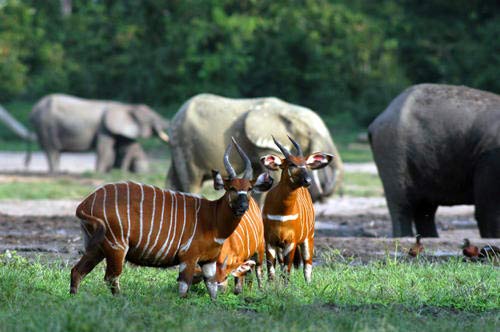UN proclaims 3 March as World Wildlife Day
 0 Comment(s)
0 Comment(s) Print
Print E-mail China.org.cn, December 24, 2013
E-mail China.org.cn, December 24, 2013
The United Nations is highlighting the intrinsic values and contributions of wild animals and plants, particularly endangered and protected species, by devoting 3 of March as "World Wildlife Day."
 |
|
Wildlife in the Sangha Trinational Site, where Dzanga-Sanga National Park of the Central African Republic is located. |
In a resolution adopted last Friday, the 193-member Assembly reaffirmed the intrinsic value of wildlife and its various contributions. Those include "ecological, genetic, social, economic, scientific, educational, cultural, recreational and aesthetic, to sustainable development and human well-being, and recognized the important role of CITES [Convention on International Trade in Endangered Species of Wild Fauna and Flora] in ensuring that international trade does not threaten the species' survival."
The Assembly selected 3 March for the Day, to coincide with the adoption of the CITES document, an international agreement between Governments of 176 Member States. Administered by the UN Environment Programme (UNEP) in Geneva, its aim is to ensure that global trade in in close to 35,000 species of plants and animals does not threaten their survival.
The CITES Secretariat, in collaboration with UN agencies, will implement the World Wildlife Day.
"The Day reminds us of the urgent need to step up the fight against wildlife crime, which has wide-ranging economic, environmental and social impacts," said CITES Secretary-General John Scanlon, who helped to bring the resolution creating the Day to the General Assembly.
"We invite all member States, relevant organizations of the United Nations system as well as all other interested organizations and individuals – from airports to museums to schools – to get involved in this global celebration of wildlife," he added.






Go to Forum >>0 Comment(s)